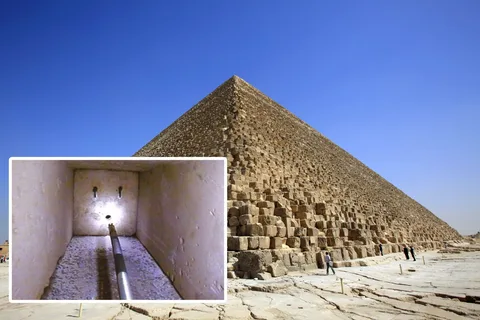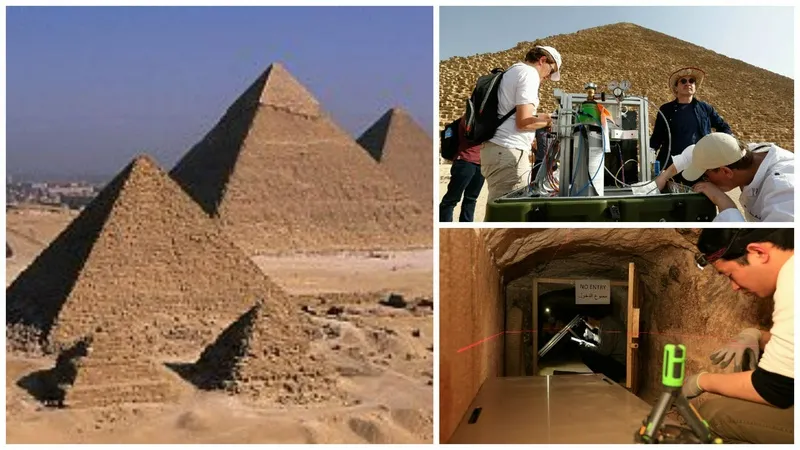Exploring the Depths: Scientists Detect Possible Underground Network Beneath the Pyramids
A sensational claim has emerged in the field of archaeology: researchers assert that they have discovered the legendary Halls of Amenti in a “vast city” beneath the Pyramids of Giza in Egypt. However, this theory has been met with skepticism, with many archaeologists dismissing it as “fake news.” The controversy has sparked heated debates in the academic community.
The research in question was conducted by an international team of Italian and Scottish scientists studying the Pyramid of Khafre. Their work, published in 2022, allegedly redefines the boundaries of satellite data analysis and archaeological exploration. The expedition, appropriately named the Khafre Project, was led by Corrado Malanga from the University of Pisa, Italy, and Filippo Biondi from the University of Strathclyde, Scotland.
Using advanced Synthetic Aperture Radar (SAR) technology, the scientists claim to have identified five chamber-like structures within the pyramid. One of these chambers is said to contain a sarcophagus, which had previously been mistaken as the Pharaoh’s Tomb. According to the research team, these five previously unknown structures are positioned at the very core of the pyramid, possibly revealing long-hidden secrets.
The findings of the Khafre Project do not stop at the five internal structures. Researchers suggest that these chambers are connected by a series of underground pathways, leading to potentially hidden chambers and wells beneath the 4,500-year-old pyramid.
Electromagnetic signals were converted into phononic data, revealing what appears to be a vast subterranean infrastructure extending hundreds of meters below the surface. Theoretical models propose the existence of eight large vertical structures—possibly wells—spanning an area of over 1,900 meters in width and reaching depths of approximately 600 meters.
Although the purpose of these underground structures remains unknown, the researchers plan to conduct further analyses and potential excavations to determine whether these formations are of artificial origin.
The Khafre Project utilized two high-tech satellites orbiting 670 kilometers above Earth to capture radar signals reflecting off the pyramids. This data was then compiled into a series of images, forming an approximate model of what might exist beneath the pyramids, including the alleged eight wells.
Initial interpretations suggest that the underground hollow structures may consist of spiral pathways leading deeper into the earth. However, without physical excavation, these claims remain speculative and subject to rigorous academic scrutiny.
Despite the excitement surrounding these findings, many archaeologists remain unconvinced. Established Egyptologists and experts in pyramid studies have labeled the claims as “sensationalized” and “unverified speculation.” The notion of a “vast underground city” and the fabled Halls of Amenti has long been part of mythical narratives, rather than accepted archaeological fact.

Leading scholars have pointed out that previous claims of hidden chambers beneath Giza have often turned out to be misinterpretations of natural formations or modern anomalies. Without on-site verification, physical excavation, and peer-reviewed replication of the study’s results, many remain doubtful about the authenticity of these findings.
The alleged discovery of the Halls of Amenti and a hidden subterranean world beneath the Pyramids of Giza remains one of the most controversial claims in recent archaeological history. While the use of advanced satellite imaging and radar technology has provided intriguing data, the scientific community urges caution and demands further verification through physical excavation and independent studies. Whether these structures represent a lost chapter of ancient Egyptian civilization or a misinterpretation of natural geological formations remains to be seen.









